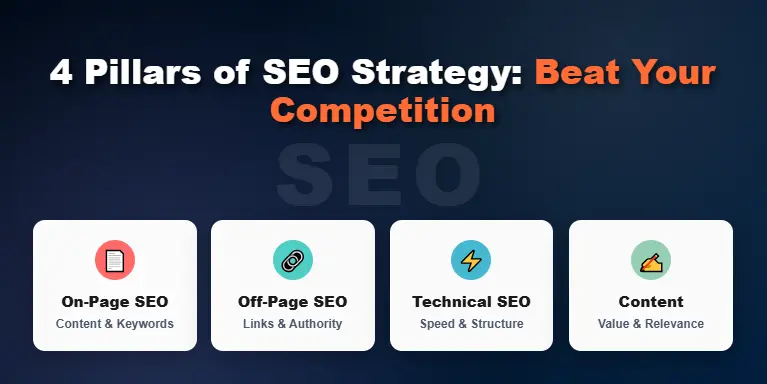Last month, being an SEO consultant, I helped my client Sarah with her bakery website. She reached out to ZHBULBUL to help her business grow online, generate more customers, and increase sales. She made amazing cupcakes, but couldn’t figure out why nobody found her online.
When I searched for “best cupcakes near me,” her bakery didn’t show up anywhere. Not on page one, two, or even three.
This happens to great businesses every day. They have awesome products, but stay invisible online while their competitors get all the customers.
Here’s what I learned helping Sarah (and dozens of other business owners): SEO doesn’t have to be scary or complicated.
You just need to understand four simple pillars that work together. Once Sarah fixed these areas, her website started showing up on Google’s first page within three months.
Let me share exactly what we did so you can beat your competition, too.
What is SEO Really Mean for Your Business
Think of SEO like putting up road signs that lead customers straight to your door. When someone searches Google for what you offer, you want your website to pop up first.
Google handles over 8 billion searches every day. That’s 8 billion chances for people to find your business.
75% of users never scroll past the first page of search results: This statistic is referenced in Search Engine Land and BlakSheep Creative.
Over 8 billion Google searches each day: While I couldn’t find an exact match for 8 billion searches per day, SEMrush provides related data, stating Google handles over 5 trillion searches annually, which averages to approximately 9.5 million searches per minute.
But here’s the catch: most folks never look past the first page of results. If you’re not there, you might as well be invisible.
Sarah’s bakery taught me this lesson perfectly. She had a beautiful website with mouth-watering photos. But Google didn’t know her site existed because she missed some basic SEO steps.
The good news? You don’t need to be a tech wizard. You just need to follow four main areas that I call the pillars of SEO success.
Why These 4 Pillars of SEO Strategy Really Matter
I’ve worked with over 50 small business owners in the past two years. The ones who succeed online all do these four things right:
- They make their websites helpful and easy to read
- They build trust with other websites
- They make sure their sites work perfectly
- They create content people actually want to read
Miss any of these pillars, and you’re fighting an uphill battle. Get them all right, and you’ll start seeing more visitors, more calls, and more sales.
4 Pillars of SEO Strategy
Pillar 1: On-Page SEO – Making Your Website Shine
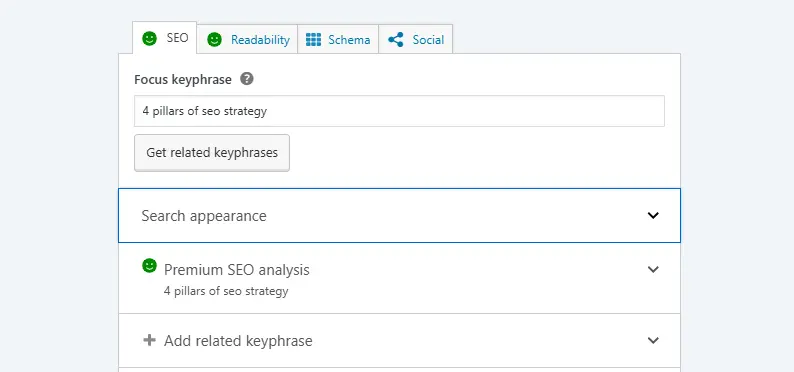
On-page SEO means fixing everything on your actual website. This is where Sarah started, and it made the biggest difference right away.
Write for Real People First
When I looked at Sarah’s original website, it sounded like a robot wrote it. She stuffed keywords everywhere, trying to trick Google. Instead, it just made her site hard to read.
We rewrote everything in plain English, ensuring clarity and simplicity. Instead of “premium artisanal baked goods utilizing organic ingredients,” we wrote “fresh cupcakes made with organic ingredients.” Much better, right?
Use Keywords Like You Talk
Sarah discovered that people searched for “birthday cupcakes downtown” way more than “artisanal celebration pastries.” We used these real phrases in her page titles and descriptions.
Here’s my simple rule: if you wouldn’t say it out loud to a friend, don’t write it on your website.
Make Great First Impressions
Your title and description show up in Google search results. These are like your storefront window – they need to grab attention fast.
Sarah’s old title was “Sarah’s Bakery – Homepage.” Boring! We changed it to “Fresh Birthday Cupcakes Delivered Downtown – Sarah’s Bakery.” Much more appealing.
Break Up Your Text
Nobody wants to read huge blocks of text. We split Sarah’s content into short paragraphs with clear headings. This made her site easier to read and helped Google understand what each section covered.
Your next step: Pick one page on your website. Rewrite the title to include words your customers actually search for. Then break up any long paragraphs into shorter, easier chunks.
Pillar 2: Off-Page SEO – Building Your Reputation
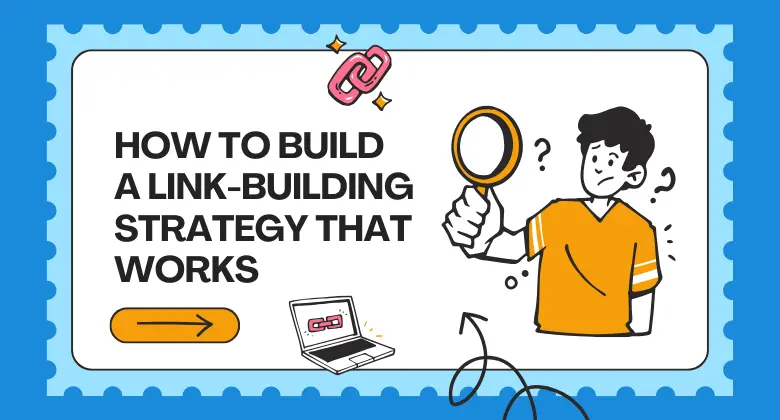
Off-page SEO happens away from your website. It’s like getting referrals from trusted friends – when other websites link to yours, Google pays attention.
Get Quality Links, Not Quantity
Sarah wanted to buy thousands of cheap links online. I stopped her just in time. Google is smart enough to spot fake links, and they can actually hurt your rankings.
Instead, we focused on earning real links from local websites. Sarah wrote a guest article for the downtown business association newsletter. That one link from a trusted local source was worth more than 100 random links.
Use Social Media Wisely
Every time Sarah shared her cupcake photos on Instagram or Facebook, more people discovered her website. Social media doesn’t directly improve your Google rankings, but it brings visitors who might link to your site or leave reviews.
Sarah posted behind-the-scenes videos of her decorating cupcakes. People loved seeing the process, and her followers started sharing the posts with their friends.
Collect Happy Customer Reviews
Google loves businesses with lots of positive reviews. We asked Sarah’s customers to leave reviews on Google and Yelp after they picked up their orders.
She was nervous about asking at first. But when she explained how much it helped her small business, most customers were happy to help.
Your next step: Reach out to three happy customers this week. Ask them to write a quick review on Google. You’ll be surprised how many people say yes when you just ask nicely.
Pillar 3: Technical SEO – Making Everything Work Smoothly
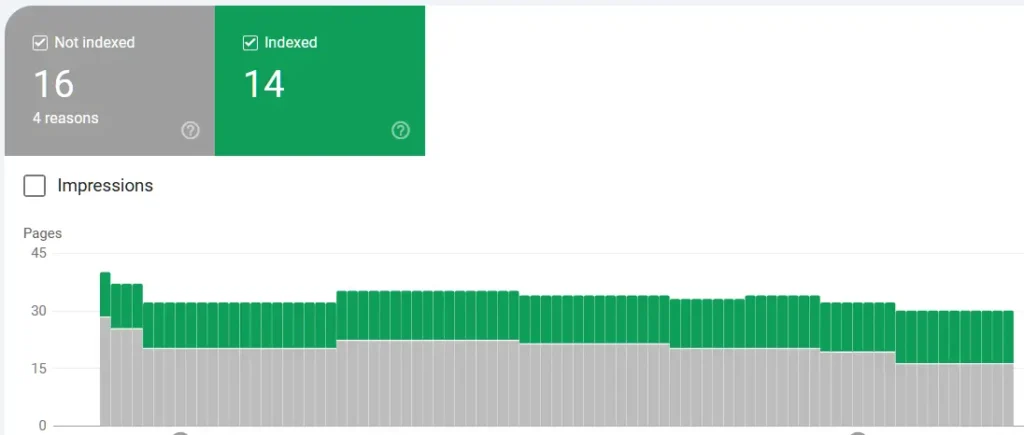
Technical SEO sounds complicated, but it’s really about making sure your website works well for everyone who visits.
Speed Matters More Than You Think
Sarah’s original website took 8 seconds to load. That’s forever in internet time. Most people gave up and went to her competitor’s faster site instead.
We compressed her cupcake photos and cleaned up some code issues. Now her site loads in under 3 seconds. Her bounce rate (people leaving immediately) dropped by 40%.
Mobile Phones Come First
More than half of Sarah’s customers found her website on their phones. But her old site looked terrible on mobile screens. The text was tiny, buttons were hard to tap, and photos didn’t fit right.
We rebuilt her site with mobile users in mind. Now it looks great whether you’re on a phone, tablet, or computer.
Keep Your Site Secure
Sarah’s website didn’t have an SSL certificate (the little lock icon in your browser). This made customers nervous about sharing their contact information.
Getting SSL protection costs about $10 per year, but it made her site look much more professional and trustworthy.
Help Google Find Your Pages
We created a sitemap – basically a list of all Sarah’s important pages – and submitted it to Google. This helped Google’s crawlers find and index her content faster.
Your next step: Test your website speed at Google PageSpeed Insights (it’s free). If your score is below 50, you probably need help from a web developer to fix the biggest issues.
Pillar 4: Content – The Heart of Everything
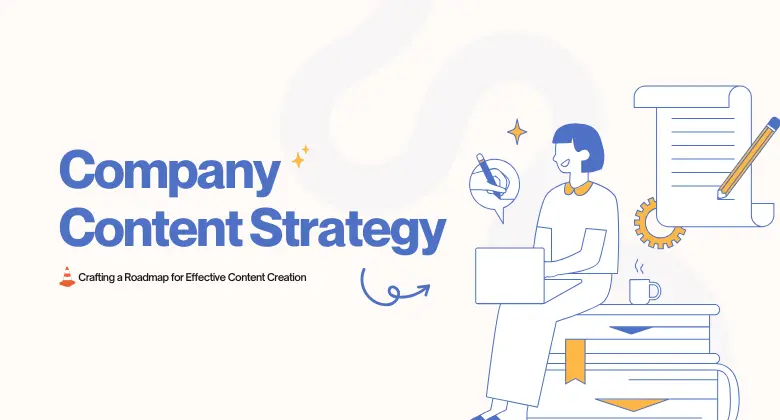
Great content is what makes people want to visit your website in the first place. Without it, all your other SEO work won’t matter much.
Answer Real Questions
Sarah’s customers always asked the same questions: “Can you make custom designs?” “How far ahead should I order?” “Do you deliver?”
We created an FAQ page that answered these questions clearly. We also wrote blog posts about cupcake decorating tips and party planning ideas. This content helped Sarah’s customers and brought in new visitors from Google.
Write Like You’re Talking to a Friend
The best SEO copywriting and content sound conversational and helpful, not stiff and corporate. Sarah started writing her blog posts like she was chatting with customers in her shop.
Instead of “Our establishment utilizes premium ingredients to craft superior confections,” she wrote, “I use the best ingredients I can find to make cupcakes that taste amazing.” Much more personal and engaging.
Keep Your Content Fresh
Google likes websites that add new content regularly. Sarah started posting one new blog article each month. She shared recipes, decorating tips, and stories about special orders she completed.
These posts didn’t take long to write, but they showed Google (and customers) that her business was active and growing.
Use Pictures That Tell Stories
Sarah’s cupcake photos were already gorgeous, but we made them work harder for SEO. We added descriptive file names and alt text that helped Google understand what each image showed.
Instead of “IMG_1234.jpg,” we named photos “chocolate-birthday-cupcakes-downtown-bakery.jpg.” Small change, big difference.
Your next step: Write one helpful article for your customers this month. Answer a question they ask you all the time. Keep it simple, friendly, and useful.
Your SEO Success Plan
Here’s exactly what Sarah did in her first month, and what you should do too:
Week 1: Fix your most important page. Update the title, break up long paragraphs, and make sure it loads fast on mobile phones.
Week 2: Ask five happy customers to leave Google reviews. Set up your free Google My Business profile if you haven’t already.
Week 3: Write your first helpful blog post. Answer a common customer question in simple, friendly language.
Week 4: Check your website speed and security. Fix any obvious problems or get help from a web professional.
The businesses that win online don’t try to do everything at once. They pick one area, get it right, then move on to the next pillar.
Ready to Leave Your Competition Behind?
SEO isn’t about tricking Google or using secret techniques. It’s about making your website genuinely helpful for the people you want to reach.
Sarah’s bakery now shows up first when people search for cupcakes in her area. Her website visitors increased by 300% in six months. More importantly, she gets at least five new customers every week just from Google searches.
Your business deserves the same success. Pick one of these four pillars and start there. Make one small improvement each week.
In six months, you’ll look back and be amazed at how far you’ve come. Your competitors might still be trying to figure out why you’re suddenly getting all the customers they used to get.
The choice is yours: stay invisible or start climbing to the top of Google’s results. Which pillar will you tackle first?
FAQs:
1. What are the 4 pillars of seo strategy?
The 4 pillars of SEO strategy are On-Page SEO, which focuses on optimizing your website’s content and structure.
Off-Page SEO which builds your reputation through backlinks. Technical SEO, ensuring your site is fast, secure, and mobile-friendly. And Content, which involves creating valuable and engaging material.
2. What are the 4 types of SEO?
The 4 types of SEO are On-Page, Off-Page, Technical, and Local SEO, each focusing on improving visibility and performance in different areas.
3. What are the 4Ps of SEO?
The 4Ps of SEO are Plan, Produce, Promote, and Perfect, covering strategy, content creation, outreach, and optimization.
4. What are the types of SEO in digital marketing?
The types of SEO in digital marketing are On-Page, Off-Page, Technical, and Local SEO, each enhancing online visibility differently.
5. What is Technical SEO?
Technical SEO improves a website’s backend, ensuring fast loading, mobile-friendliness, security, and easy search engine crawling.
6. What is On-page SEO?
On-page SEO optimizes website content, structure, and keywords to improve search engine rankings and user experience.
